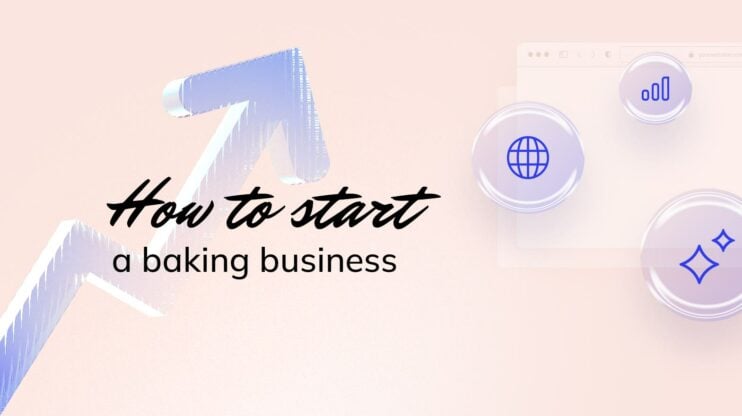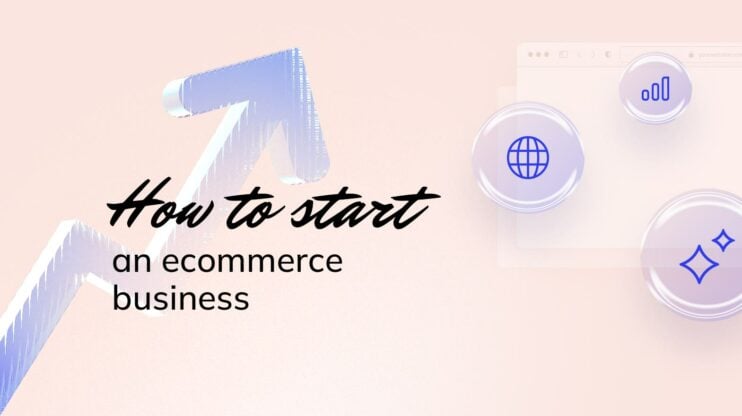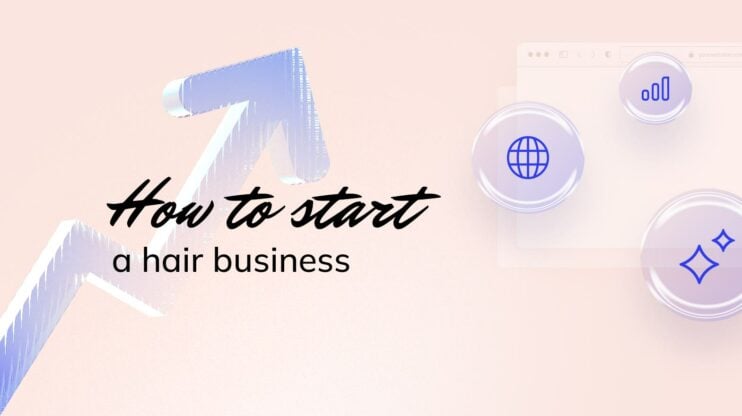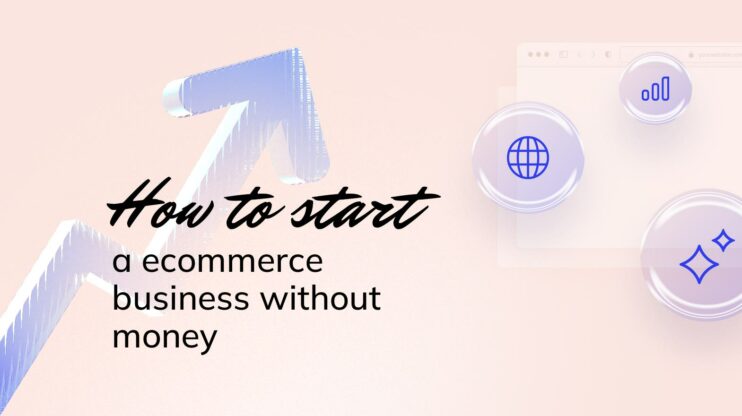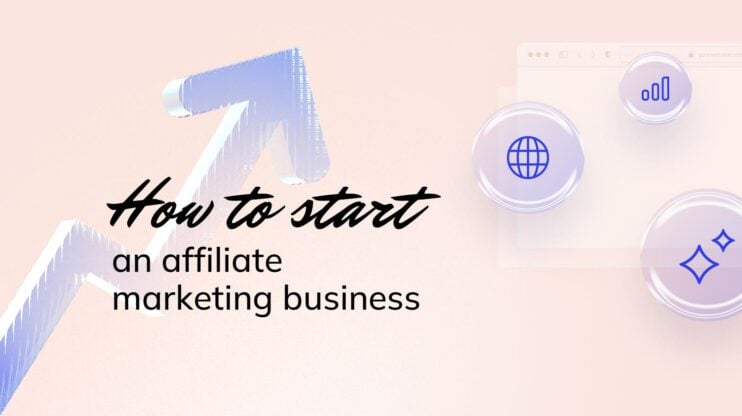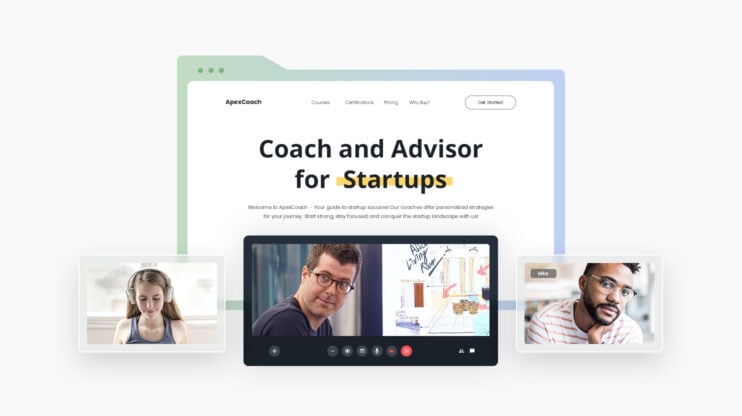If you’re wondering how to sell posters online, you’ve got to hear this! I searched far and wide and uncovered some hidden gems of wisdom from artists who know what it’s like to sell posters online.
Here’s what you’ll learn:
- Tips on how to find the right specialized niche
- Advice on financial considerations
- How to create and leverage a brand and an online presence
- The best platforms to sell posters online
- Tried and true marketing strategies

Looking to sell online?
Create your custom online store in minutes with 10Web AI Ecommerce Website Builder and take your business online.
Understanding the online poster market
If you want to sell posters online, you’ll have to find a way to stand out in a crowded market. I know your Midjourney artwork is amazing, but if you’re thinking about slapping some AI images up on Etsy and calling it a day, you can forget that.
You must find a unique way to add value that makes people whip out their credit cards or favorite payment apps.
Successful entrepreneurs who happen to have sold a poster or two online say it’s important to understand market trends. This will help you narrow down your focus and develop your vision.
Market research: finding the best-performing trends and niches
Instead of randomly throwing stuff at the wall to see what sticks, improve your chance at success by doing some market research and seeing what’s actually selling.
Analyzing search trends
Trend analysis tools like Google Trends and Pinterest Trends can help identify what people are searching for. These tools are a treasure trove of themes, designs, seasonal demand, keywords, and topics people search for and engage with.
Observing online sales
Mining marketplace sites like Etsy and Amazon for best sellers will glean a ton of insights into what people actually buy. Reviews often contain helpful (or painfully honest) details about the products and the overall shopping experience that will point you in the right direction.
Social media and virtual town squares
Keep your finger on the pulse of social media, too. Instagram and Pinterest are retail hotspots. Businesses also hang around online communities on sites like Reddit or Facebook Groups. It’s a good way to learn invaluable insider information straight from the source.
Digital vs physical posters
A digital product model has a lot to offer. Shoppers get instant delivery that doesn’t involve shipping labels and tracking, and you don’t have to pay to print anything. Once created, the posters offer an easy path to passive income.
Sounds great, right? Yeah, that’s what everyone else said, too. With a tiny barrier to entry, this market is among the most competitive. You’ll want to find a high-demand area with something to set you apart.
That’s not to say printed posters aren’t a good option. Physical products often have a higher perceived value than intangible digital products. However, you’ll need to handle printing and shipping or find a good print-on-demand provider.
Specialized market segments
While you’re lurking on Etsy trying to see what everyone’s up to, pay close attention to the most popular styles and themes. Trendy categories often include:
- Vintage, retro, and antique – Art deco, nouveau, or sepia tones, this category includes a nearly inexhaustible source of themes, styles, and genres.
- Fan art and pop culture – A super popular category with a truly engaged audience, but stay mindful of copyright issues. This niche is filled with favorite shows, movies, books, games, and more.
- Minimalist and abstract art – Timeless, these prints never go out of style. Plus, interior designers seem to love them.
- Landscapes – The world’s natural beauty is available free of charge, but there’s always a demand for landscape photography and artwork.
- Inspirational art and quotes – There’s a high demand for these types of posters. You’ve probably seen them in the office, gym, or classroom.
- Educational posters – Perfect for students, teachers, and lifelong learners.
- Event posters and custom prints – Weddings, concerts, and corporate events always need custom work.
Tips for targeting specialized segments
To target a specialized segment, start by getting familiar with the audience’s high-profile personalities, experts, voices, and influencers. This can tell you a lot about where that audience tends to hang out online, what’s on the collective mind, and most importantly, gives you a toe-hold in the community.
Check out the conversation in social forums like Reddit or Facebook groups related to your niche. Hone in on what the audience wants for the best success.
If you’re the artist and the seller, this part of the process can be a double-edged sword. While it’s necessary to understand the market and cater to the right audience, as an artist, you still have to be yourself.
Barbara Kruger, artist and seller, suggests that artists must find balance in this tight-rope walk to achieve success as a seller.
“Don’t let the market system torture you. Make your work as strong as possible and don’t destroy yourself with comparisons to your peers.”
If you’re selling the posters you design, focus on your unique creative vision rather than constantly chasing trends. As Theodore Roosevelt said, “comparison is the thief of joy.”
Money matters
Artistic abilities aside, you’ll need a little business acumen to get this idea off the ground.
Take Humphrey Yang as an example. He and his partner decided to create a business that sells posters online. They chose a high-demand, niche product that was easy to produce, then started with $20,000 and a best-selling design of their custom posters of street maps.
He recommends not spreading yourself too thin. Before worrying about expanding, feel things out with one or two posters you know are best-sellers.
For a less risky start, take some proactive steps toward creating some realistic financial projections:
- Estimate the market demand: This is a must. Use trend analysis and competitor research to gauge demand.
- Project monthly sales: This can be tricky, so start with conservative figures based on demand and how the competition is doing.
- Calculate your overhead: Include all the costs that go into producing your posters. That includes your time and labor in addition to the basics like printing, shipping, platform fees, and advertising.
- Plan for your profit margin: Some experts recommend aiming for a 30% – 50% profit margin per sale.
Pricing your posters
Your research will guide you in planning your profit margin and pricing your posters.
Kelsey Rodriguez offers a word of caution for artists selling posters online. She warns that “artists often undervalue their work, leading to unsustainable pricing that fails to cover expenses or provide a living wage.”
To avoid self-sabotage, a good rule of thumb is to double or triple your production costs. Whether you’re the artist, designer, or simply a vendor, factor in every last bit of time, money, and resources it takes to produce and sell each poster.
How to sell posters online
If you want to sell posters online, you need:
- A researched-backed vision for what you want to achieve
- Branding and an online presence
- Seller profiles on the best ecommerce platform(s) for your audience
- Marketing strategies to promote your online posters

Looking to sell online?
Create your custom online store in minutes with 10Web AI Ecommerce Website Builder and take your business online.
Vision
Don’t wander aimlessly. Create a clear vision of what success looks like for your poster business. This will light your way and provide direction.
The who, what, and why
Now that you’ve done some research, you can begin to answer some essential questions:
- Who is my audience?
- What do they buy?
- Why my posters?
By now, you should be able to figure out your place in the market. Does your artwork resonate with a particular group of people? Can you source amazing motivational posters that everybody’s manager will love, or can you create a custom product in high demand?
Goldilocks goals
Not too high, but not too low. Setting achievable short-term and long-term goals builds momentum. Accomplishing a goal can offer a little encouragement while you’re really tired of worrying about those posters.
Knowing your niche will help you work out the best designs and marketing strategies. By observing and studying your market, you can work towards:
- Reaching a monthly sales target
- Expanding your catalog
- Bringing a number of new, loyal customers into the fold
- Increasing monthly visitors
Steps to achieve your vision
- Define your market: commit to a specific audience for your posters.
- Research the niche: Use trend analysis and your own sleuthing skills to understand the niche and its best-selling posters.
- Branding: At a minimum, create a logo and choose a color palette and design elements that match your posters’ theme and feel.
- Goal setting: Slowly but surely wins the race. Set attainable goals for trajectory and guidance.
- Planning: Break down goals and strategies into actionable steps.
With your vision mapped out, you’ll have a guiding light for staying focused on what matters the most.
What’s the plan?
A business plan sets out your vision in all its bureaucratic glory. Developing a business plan exposes the nuts and bolts of starting and managing your business.
- Executive summary: This one is easy. It’s just an overview of your business. It includes the business name, details about the posters you sell, and the target market.
- Market research: Includes your research on competitors, pricing, trends, and market segments.
- Business model: This part should explain how you’ll source and deliver your posters. It might explain decisions to go with a drop-shipping model or how you’ll partner with artists to produce the posters.
- Financial plan: Details costs, pricing strategies, and financial projections.
- Marketing strategy: This section describes how you’ll draw in your target audience. This will likely include a website, social media, email marketing, and SEO.
- Operations plan: Covers the business’s day-to-day activities. This might include designing posters, managing the website and social profiles, handling customer inquiries, etc.
- Goals and milestones: Your short- and long-term goals and key milestones, like a launch date or the sale of your first poster.
- Risk analysis: This covers the risks involved in the plan and lays out strategies to neutralize potential issues as they arise. Consider how you’ll manage during a production delay or what you’ll do if competition or the market becomes more challenging.
Build a unique brand for your posters
Be unique, have a flavor, and be bold. Instead of striving for universal appeal, find your tribe and immerse yourself in that world. This means developing a strong brand that’s memorable and purpose-driven.
- Know who you are as a brand: Take a stand. What does your brand stand for when you consider your values, vision, and unique selling points? This encompasses the themes, styles, and stories your posters show and tell.
- The face of the brand: A striking logo is the face of your brand. It should be unique, memorable, and above all – it should align with your brand’s personality.
- Voice and style: Words matter, but how you say them carries even more weight. This can be tricky through an online medium. Whether it’s edgy, casual, or totally in-your-face, be mindful of maintaining a professional, appropriate tone of voice. Make sure your communication is consistent across your online persona and marketing materials.
- Catchy tagline: This should match your voice and style. Keep it snappy and memorable.
- High-quality visuals: Don’t skimp on high-quality product images and design elements. Potential customers are watching and judging your business on a painfully superficial level. First impressions matter the most, so make sure your images are polished and runway-ready.
- Brand all the things: Make your mark on the web by actively participating in social media platforms from your branded profile. Meet your customers halfway by maintaining a branded presence on the best ecommerce platforms for your audience. That could mean sites like Etsy or Amazon.
Essential tools for branding
With all the advice out there about branding, it’s nice to have a well-equipped palette of tools to lend a hand.
- Logo design tools: Canva, Adobe Spark
- Color scheme generators: Coolors, Adobe Color
- Font resources: Google Fonts, Font Squirrel
AI-powered tools can help you detour around the part where you stare at a blank workspace in Canva.
Where to hang your grand opening sign
After all that research, I bet you have an idea of where you want to see your posters. Make sure to explore all the popular marketplaces and opportunities for exposure. It’s essential to consider costs like monthly subscriptions and transaction fees as they play a role in how you’ll structure your pricing.
Popular platforms to consider
Successful poster sellers recommend broadcasting efforts on multiple platforms. Your choice will largely depend on your business model and audience.
10Web
This AI-enhanced platform offers the most accessible path to a functional ecommerce store for many businesses and brands. 10Web’s WordPress-optimized environment uses WooCommerce and the AI Ecommerce Website Builder to power ecommerce.
With this popular and extensible plugin, you’ll have an easy way to manage an online store and accept payments. This combination of performance-optimized hosting, website-building tools, and convenient store management makes 10Web a go-to solution for those seeking a professional ecommerce platform where everything is under your control.
Etsy
Etsy is brimming with handmade and unique items, making it ideal for selling posters online. You get access to a large, built-in audience, and setting up a seller profile is easy.
Your website
You can’t replace the benefits of having your own website. Since you own the site and pay for the web hosting, you get full ownership and control over:
- The content you publish
- Website design and function
- User experience
You don’t get the built-in audience of large marketplaces, but you also avoid being subjected to their fees. The idea is to nurture your website’s audience where you can have direct interaction with customers and build relationships.
Amazon
Amazon’s massive customer reach is undoubtedly its best feature and worst problem. While you can get your posters in front of millions of eyes, the competition is stiff. Still, the sales potential is enormous. All you need to do is register and set up your seller account.
Sellfy
This digital product platform handles all the aspects of selling posters, like payments, fulfillment, and even some marketing tools.
Shopify
This all-in-one ecommerce platform provides a way to set up your online poster shop and manage payments, orders, and inventory in one place. Shopify offers tools to sell on social media and other marketplaces. Overall, this popular, fully-fledged platform has a lot to offer new businesses, although the comparatively higher platform fees tend to reflect the premium features.
Support
Good customer service will serve you well. Since you’re a paying customer, look for platforms that offer multiple contact options like 24/7 live support, chat, and a good help center.
Integrations
Check to see if the platform offers integrations for tools you already use. Integrations for essentials like store management, email marketing, and social media streamline your day and save you time.
Testing
Set up accounts and take them out on a test drive. Test out the platforms and user interfaces so you have first-hand experience managing products, orders, and using platform-specific features.
Costs
Take notes during testing, so you can lay your options out, and get a bird’s eye view of all the factors at play.
| Platform | Monthly Fee | Transaction Fee | Key Features |
| Shopify | $29 | 2.9% + 30¢ | Customizable themes, marketing tools |
| Etsy | Free/$10 | 6.5% | Built-in audience, easy setup |
| Amazon | $.99/sale or $39.99 | 15% | Huge customer base, FBA options |

Looking to sell online?
Create your custom online store in minutes with 10Web AI Ecommerce Website Builder and take your business online.
Get your posters! Get them right here!
You’ll want to leverage the marketing channels in your online presence to promote your posters. Experienced sellers recommend starting before the launch date to generate interest and build anticipation.
Cast a broad net
Your audience is filled with individual tastes and preferences. Keep lines of communication open and meet potential customers via their preferred method.
Social media
To sell posters online, engaging with communities on social media platforms is a must. Joining the conversation allows you to connect directly with your audience.
Visual-first platforms like Instagram and Pinterest are well suited to products like posters. To drive traffic to your poster listings or website, use popular hashtags and share high-quality images and videos with groups and your followers. Get creative with your content. As long as it’s on-brand, you can publish just about anything:
- Poster designs
- Behind-the-scenes content
- Promotions and special events
- Real-life events and contributions
- Collaborations with influencers
Collabs with influencers
Working with influencers and prominent voices in your niche can help you reach a larger audience full of qualified potential leads. Bonus points for choosing someone who can give you an authentic endorsement. That can give you the credibility boost to make that first sale.
That’s exactly what Humprey Yang did. He points out they made their “first sales through Instagram advertising and influencer marketing.”
Email marketing
While you’re building relationships with your audience members, be sure to build an email list, too. Then, dazzle your new readers with regular newsletters, upcoming promotions, or exclusive discounts. Keeping things personalized and interest-based can go a long way toward making your emails a welcome appearance.
Content marketing
Publishing blog content related to your posters’ theme or niche can drive traffic to your website and create the air of authority that search engines love. Establishing yourself as an authority in your niche lends credibility to your website and encourages readers to become paying customers.
Paid advertising
A judicious amount of paid advertising can boost your sales dramatically. Some platforms like Facebook and Instagram allow you to use paid advertising to reach users based on their interests and demographics.
Google would love for you to appear in search results, especially when it’s among their sponsored listings. Just be mindful of costs and how that will impact profit based on your current pricing.
Promos, giveaways, contests, and other interactive content
Increase your reach and engagement by offering contests, raffles, or giveaways that encourage your subscribers to share your posts and tag their friends for a chance to win a free poster or VIP access to an exclusive design.
Listen to your audience
Most importantly, listen to your audience. Encourage reviews and comments by taking action on customer feedback. Users will often tell you how you can improve your product offerings, customer service, or shopping experience.
If you build it, they will come
Strictly relying on anything that uses an algorithm to determine when to show your content is just asking for problems.
GoDaddy CEO Aman Bhutani says to maintain ownership of your audience by guiding them toward a website that you control. Then, you can give your customers a cohesive shopping experience from marketplace platforms to your branded website.
Running your own ecommerce store allows you to cultivate your following and communicate directly without relying on the whims of Etsy or Amazon.
Would it help if you already had an ecommerce site set up and ready to go?
I know you’ve got a mile-long list of tasks to knock out before you can start selling posters online. The AI Ecommerce Website Builder can fix you up in just a few minutes. Start by answering a few questions about the type of website you want, fine-tune the AI-powered suggestions for layout and poster products, and then get started on your virtual storefront.
With a professional ecommerce store for selling posters, you’ve got a central hub to anchor your online presence. Use those seller profiles and listings that you set up on Etsy or Amazon to encourage customers to visit your website, so you can:
- Build your brand’s audience with no middle-man interference
- Leverage website integrations to build a list for email marketing
- Convert marketplace customers to your ecommerce store and skip the platform fees
- Maintain control and ownership of your brand’s appearance and content
Are you still reading? You could be polishing your page layout by now! Head over to the AI Ecommerce Website Builder and get started on this key task so you can get busy selling posters!
FAQ
How do I start my poster business?
First, research the market to identify a niche. Tools like Google Trends and Pinterest, along with communities on social media, all help find trending themes and styles so you can seek out that niche’s audience. Create and maintain an online presence on socials, ecommerce marketplaces like Etsy, and your branded website. Start small, with one or two solid posters, and set goals that encourage growth and motivation. A conservative start can help mitigate financial risks in the early days. Pay attention to customer feedback; your audience will guide you on what’s working and what needs improvement.
What is the best way to sell posters?
This depends on your audience and budget. Platforms like Etsy and Amazon have an established audience that can help bring needed visibility when starting out. Social media like Instagram and Pinterest are a great way to get your posters in front of people already interested in that style, theme, topic, or niche. Ecommerce platforms like WooCommerce let you set up an online poster shop to build your online presence and avoid platform fees from sites like Etsy or eBay.
What kind of posters do people buy?
Some posters seem to benefit from long-term popularity. The usual suspects include inspirational quotes, pop culture, vintage and retro designs, and minimalist and abstract art.
Poster market trends in 2025 also show strong interest in:
- Educational
- Botanical
- Themed collections
- Personalized posters: custom maps, name art, events, etc.
Is it profitable to sell posters on Etsy?
The best thing about Etsy is its established audience. It’s huge! This can mean a ton of exposure and sales potential. Focus on creating a credibility-boosting storefront with cohesive branding, high-quality poster images, and optimized listings. In return for the honor of selling posters on Etsy, you’ll need to pay the platform’s listing and transaction fees, so plan prices accordingly.
Can I sell posters with quotes?
This is a popular niche, especially paired with trendy poster design and typography. Motivational, funny, or relatable quotes tend to resonate with shoppers. However, be mindful of potential copyright issues. Some poster sellers use quotes from the public domain to steer clear of these issues. This usually includes quotes attributed to ancient Greek philosophers and famous people who are no longer with us.









